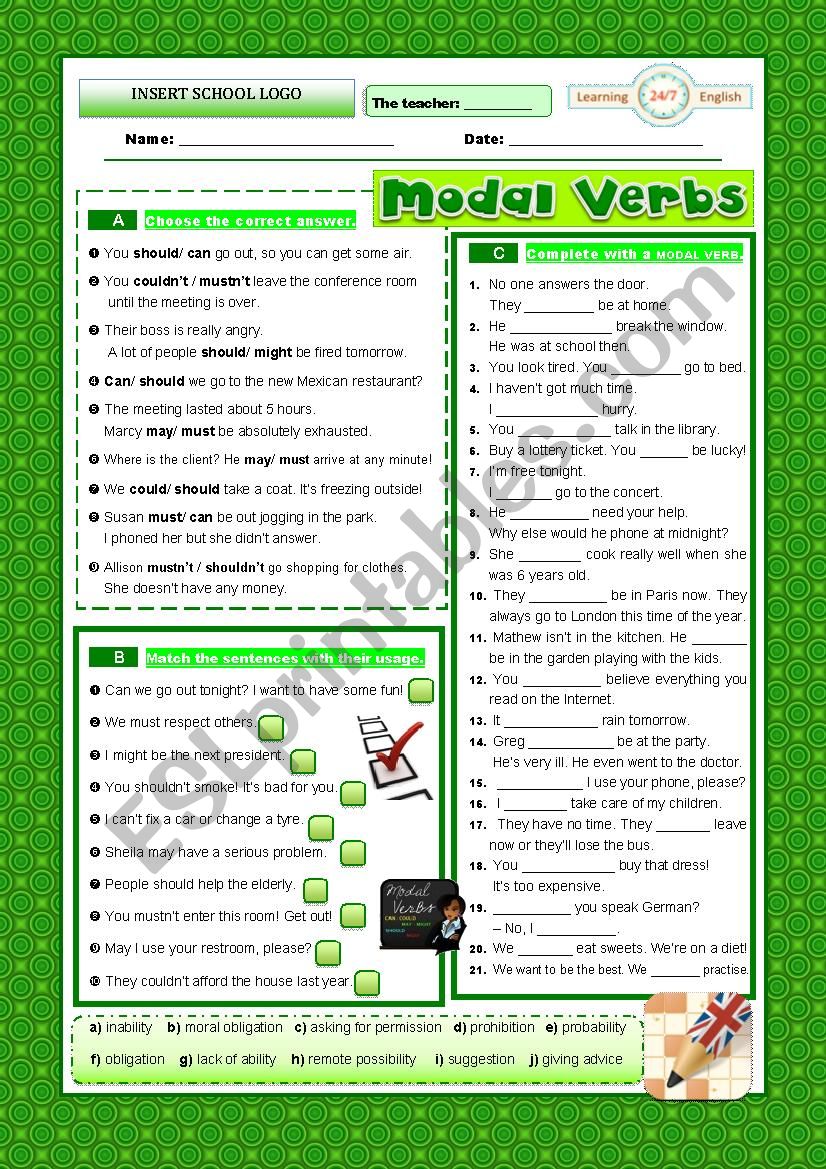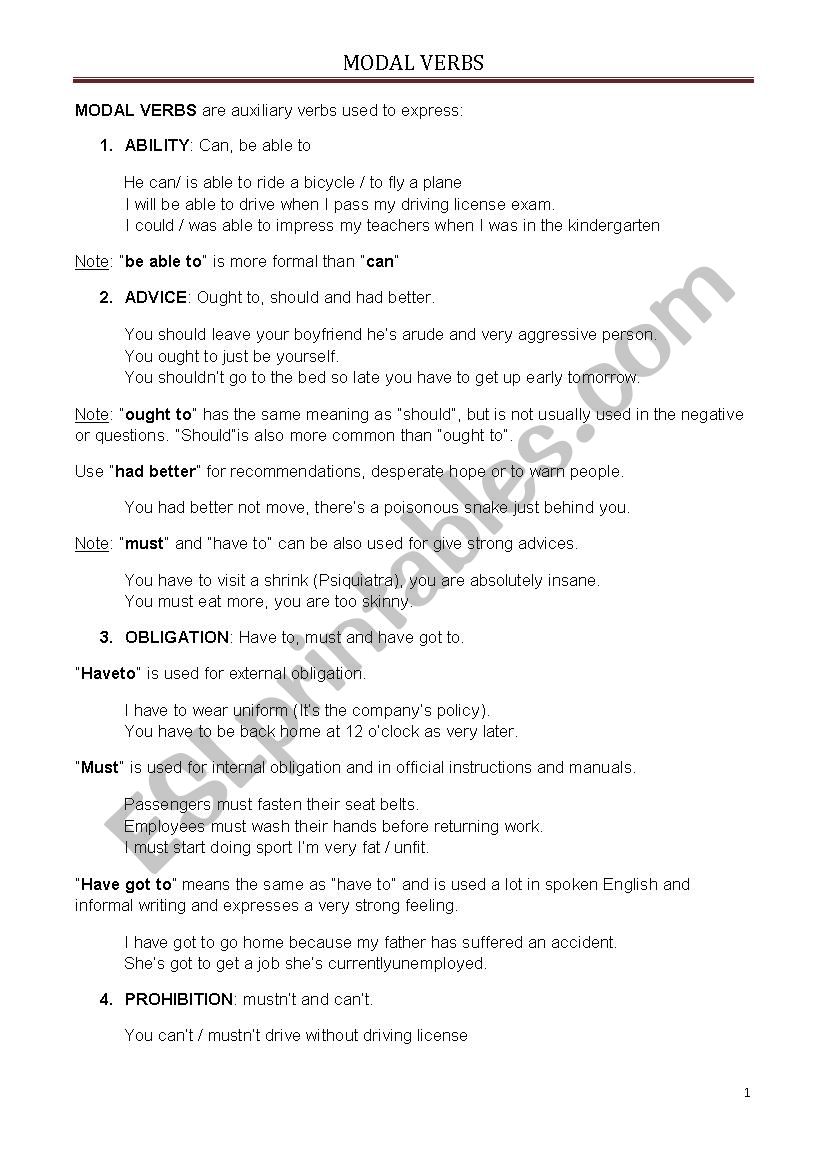

If the question is about a negative statement, the student needs to find someone who answers 'No, I didn't'. When a student finds someone who answers 'Yes, I did' to a question made from a positive statement, they write down that person’s name. Next, students go around the class asking one another their questions. 'When you were young, did you have to go to school by bus?' Students also create two more questions of their own at the bottom of the worksheet. Students start by turning each statement on the worksheet into a question, e.g. In the activity, students ask and answer questions about what they were obligated to do when they were children. This memorable past obligation speaking activity helps to teach students how to express obligation in the past with had to and didn't have to. Finally, students go around the class reading their sentences to other pairs who try to guess the place being described. Afterwards, pairs think of a place and write five rules for that place using modal verbs of obligation. The first pair to do this correctly wins. Students then read the sentences and decide which rules are for a museum and which are rules for a swimming pool. Next, students refer to the sentences they just wrote down and complete rules with the modal verbs of obligation: must, mustn't, have to, don't have to, should or shouldn't. Students then swap roles for Text B and the process is repeated.

This continues until all the sentences in Text A have been dictated. The reader runs to Text A, reads the first sentence, remembers it, runs back and dictates it to the writer who writes the sentence on the back of their worksheet. One student is the reader and the other is the writer. Ought to are examples of semi-modal verbs.In this enjoyable modal verbs of obligation running dictation activity, students practice completing and writing rules for various places. Semi-modal verbs are composed of two or more separate words ending with ‘to’. Will you join us for coffee? Won't you come in? I shall be in London on Monday (or I'll be. I've revised so I should be ready for the test. You should take an umbrella in case it rains. You must be tired after your long journey. The President may come to our offices if the meeting finishes before 5 pm. The subject: Can you? NOT Do you can? MODALĬan I come with you? ('May' is also used.)Ĭharlie could swim when he was four years old.Ĭould you tell me the way to the station please?

5) Questions are formed by inversion with 4) The negative is formed by the addition of not / n’t:ĭon’t can. 3) They do not have a past form: He/she canted. Modal verbs have the following characteristics: 1) They do not have participle or infinitive forms 2) They do not take the ending -(e)s in the third-person singular. Possibility, prediction, speculation, deduction and necessity. Modal verbs are a type of auxiliary verb which express the mood of another verb.


 0 kommentar(er)
0 kommentar(er)
